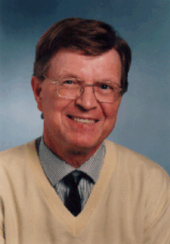| Georg E. Schulz |
|
The architecture of natural macromolecules In “Bauhaus times”, new (macroscopic) materials came up that allowed novel (macroscopic) architectures. In present times, we are able to manipulate (microscopic) materials like natural macromolecules and use them in the design of novel quasi-natural (microscopic) architectures. Actually, we know the structures of a multitude of natural macromolecules at atomic detail and also quite a number of structures of higher associations built up from them. - The natural macromolecules will be introduced and the underlying chemical and mathematical laws for the association to higher architectures will be discussed. For proteins, the evolutionary boundaries of Nature strongly favor symmetric molecular associations over asymmetric ones. For the same reason, namely the multiplicity of a mutation, the design of novel molecular protein architectures is the easier the higher the symmetry. Since symmetric designs are generally considered beautiful, we end up with aesthetic molecular assemblies, which may even become useful in the far future. Some designs worked out and will be presented. Georg E. Schulz is Emeritus Professor at the Institute of Organic Chemistry and Biochemistry at the Albert-Ludwigs Universität Freiburg. He earned his Ph.D. in Physics in 1966 and was a post-doctorial researcher at Yale University, USA. He was also Einstein Visiting Fellow at the Weizmann Institute in Israel and in 1983 held the Chair of Biochemistry at the University of Freiburg. In 1993 he won the Max-Planck-Forschungspreis award. In 1998 he was a Member of the Deutsche Akademie der Naturforscher Leopoldina as well as Member of the Board of Reviewers of Science Magazine in 2001. In 2007 he was also Associate Editor of the Journal of Molecular Biology. |


